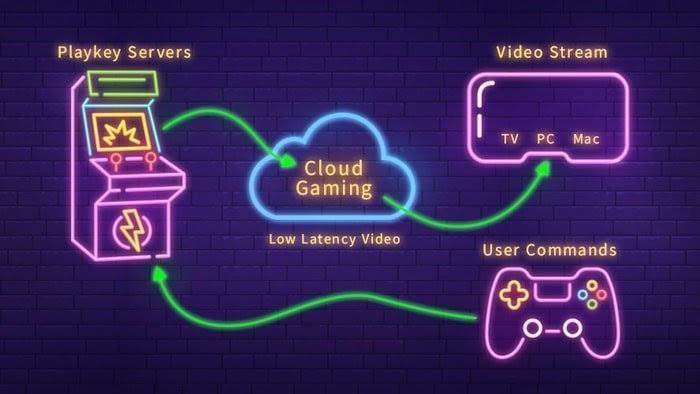
No console. No downloads. Just click, play, and go.
That’s the promise of cloud gaming, a rapidly evolving technology that’s transforming how players access, experience, and pay for games.
Big tech, indie devs, and mobile-first gamers are all paying attention. And if you’re not yet in the cloud—chances are, you will be soon.
What Is Cloud Gaming?
Cloud gaming lets you stream games in real time over the internet, without needing powerful hardware.
Instead of installing a game on your console or PC:
- The game runs on a remote server
- Your device acts like a screen and controller
- You send inputs → the server processes → streams back visuals
Think Netflix—but for games.
Major Players in the Cloud Gaming Space
1. Xbox Cloud Gaming (xCloud)
Part of Xbox Game Pass Ultimate. Lets users stream games to PC, Android, iOS.
2. NVIDIA GeForce NOW
Play PC games you already own (Steam, Epic, etc.) on nearly any device.
3. Amazon Luna
Subscription-based access to curated games. Smooth interface, growing library.
4. PlayStation Plus Cloud Streaming
PlayStation’s solution for streaming PS4 and PS5 titles—especially useful for retro games and big titles without installs.
5. Shadow & Boosteroid
Lesser-known services offering full PC desktops in the cloud, with customizable setups.
Why Cloud Gaming Is Gaining Ground
Accessibility
No console? No problem.
You can now:
- Play AAA titles on a tablet or Chromebook
- Stream via smart TVs or browsers
- Avoid huge downloads or installs
It levels the playing field—especially in regions where gaming hardware is expensive or scarce.
Cross-Device Flexibility
Start on your TV. Continue on your phone. Finish on your laptop.
Cloud gaming makes gaming portable across devices, with seamless sync via the cloud.
Instant Play
No updates. No patches. No storage issues. You just hit play and you’re in.
This frictionless experience appeals to modern players used to instant content access.
The Tech Behind It: Why Latency Matters
Streaming games requires:
- Low latency (input delay = frustration)
- Strong, stable internet (ideally 15–25 Mbps minimum)
- Servers geographically close to users
The challenge isn’t graphics—it’s speed.
Even a slight delay can ruin fast-paced games (shooters, fighters). That’s why cloud services invest heavily in infrastructure.
Cloud Gaming vs Traditional Consoles
Advantages:
- No need for hardware upgrades
- Lower upfront cost
- Play anywhere
- Subscription-based models are cheaper short-term
Drawbacks:
- Requires constant, fast internet
- Input lag can still be an issue
- Limited ownership (you’re renting access)
- Game libraries vary per platform
It’s not a total replacement yet—but for many, it’s good enough already.
The Business Model Shift: Gaming-as-a-Service
Cloud gaming accelerates a broader industry shift:
- From ownership → to access
- From $60 titles → to subscriptions
- From hardware sales → to monthly engagement
Xbox Game Pass, Luna+, and PlayStation Plus Premium are building Netflix-like ecosystems.
It’s not just about games anymore—it’s about keeping you inside the platform.
Indie Games and the Cloud
For indie devs, cloud gaming offers:
- Broader reach (players with low-end devices)
- Instant demos via browser
- Better discoverability via subscription bundles
Smaller studios are no longer limited by hardware distribution. The cloud gives them a global stage.
Mobile Gaming’s Cloud Boost
Cloud gaming could make mobile devices as powerful as gaming rigs.
Imagine:
- Playing Cyberpunk 2077 on your phone
- Using Bluetooth controllers to access console-quality gameplay
- Never worrying about storage space
In developing countries especially, this will redefine gaming.
Is the Future 100% Cloud?
Not quite—yet.
Why we’re not there:
- Data caps and rural internet limitations
- Latency-sensitive genres still prefer local play
- Gamers value ownership and modding
But it’s coming.
Hybrid models—download + stream—are already common. As 5G and fiber expand, pure cloud experiences will only improve.
Final Thoughts
Cloud gaming isn’t hype anymore. It’s here, reshaping how games are made, sold, and played.
Whether you’re a hardcore gamer or just getting started, the cloud brings powerful gaming to your fingertips—with no box required.
The future of gaming won’t be tied to hardware. It’ll be tied to the strength of your connection.







